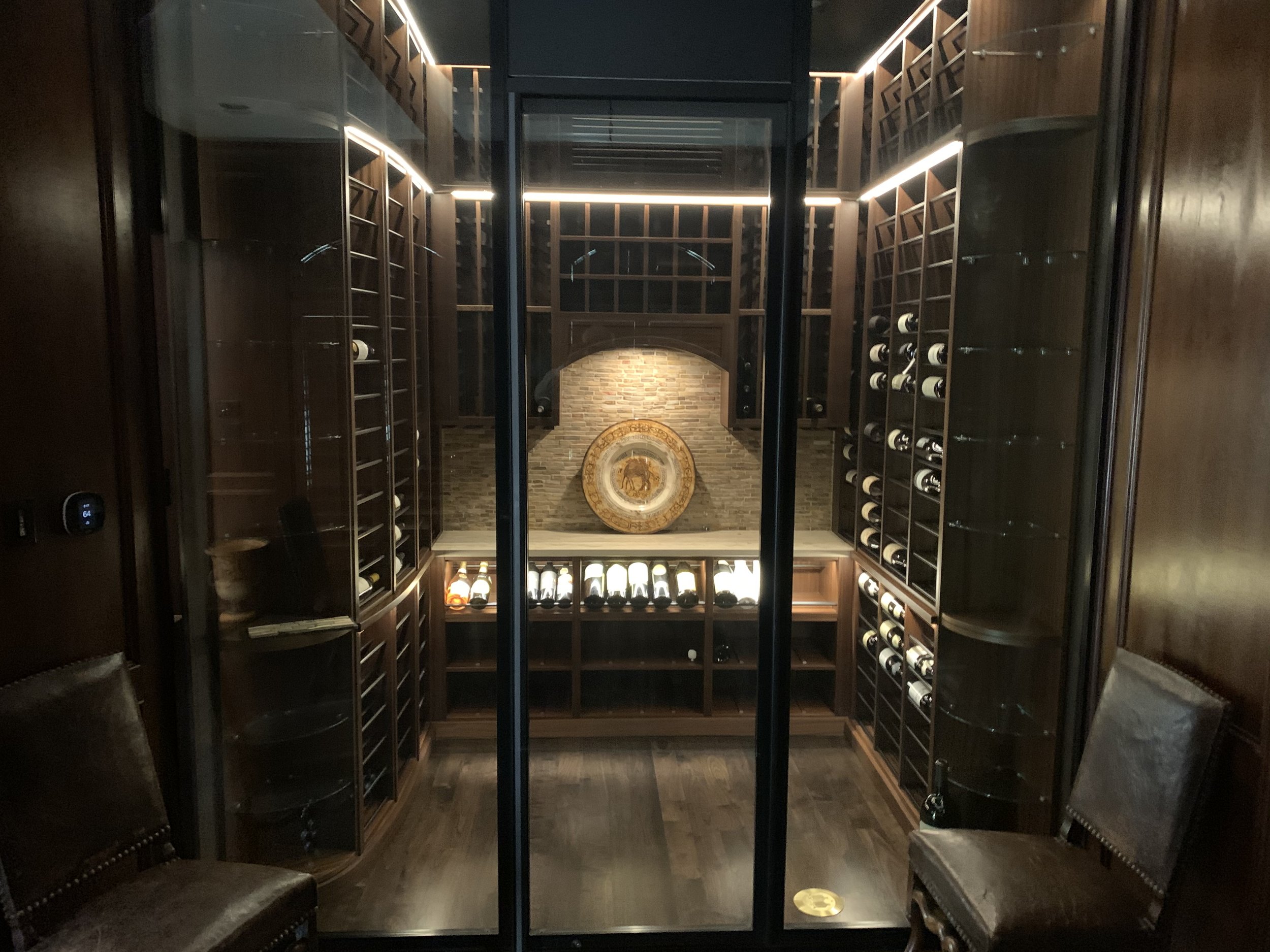
Knowledge Base
FAQ’s
-
Most specialty wine storage facilities should have top-notch refrigeration systems along with generators. Important question to ask:
Are the refrigeration systems sized and placed correctly so that if one or more are out for a few days, does the entire wine storage area remain at the target temperature? If they say yes, have them show you the systems.
-
All refrigeration equipment has a “dead zone” between the set point and the temperature at which the system cycles on. This dead zone can be as high as 4° F in some wine room refrigeration.
This temperature fluctuation is not necessarily a bad thing for your wine collection. If you have concerns, discuss with the person designing your wine room refrigeration.
-
The following factors are some of the things that should be part of the discussion when planning the type of refrigeration equipment to be used in the wine room.
Can the equipment be serviced onsite?
Does the system have strong enough throw to cool the entire space?
Is the interior component installed so it can be accessed for service?
-
The exterior component of a split system needs to have plenty of open air around it and be be out of direct sunlight if possible.
-
Greater Houston is in a “Hot Humid Climate” zone and is seeing consistently hotter and longer summers. This increases the need to insure the wine room envelope is designed and implemented correctly.
One reason is to insure the wine room is problem free. The long periods of heat over 95 degrees put significant strain on the wine room refrigeration as well as any walls of the wine room that are on exterior walls of the house.
Another reason is to insure work on the wine room envelope is part of the whole house envelope planning.
If you’re concerned, we strongly recommend you talk to your builder and or hire a building envelope specialist like TONER Home Matters.
-
Different types of wine room refrigeration have different levels of air throw. It’s important that the equipment you install has the necessary throw to cool the entire space evenly.
-
If a ducted system is used, it’s vital that the ducts be in the envelope. If not, they need to be heavily insulated or they will sweat.
-
If the cold air coming out of the interior unit is pointed right at the glass walls, the cold air hitting the glass could cause a dew point. Dew point usually means condensation which is not good.
The refrigeration equipment needs to be sized correctly to account for the heat gain from the glass.
-
It’s a very good question and the answer is complicated.
NCV has significant experience with correctly installing the wine room envelope and we bring in THM to consult if necessary.
Our recommendation is to have a discussion with your builder and architect to address your concerns and then make the decision.
-
There are some potential “gotchas” with unframed glass walls on a climate controlled wine room. The two most significant concerns are: is the refrigeration sized to compensate for the heat gain from the glass and the unsealed areas; and, will there be condensation on the glass?
-
If the unit is over-capacity, it will probably short cycle. Short cycling contributes to the equipment failing sooner than expected and probably too much rH in the space.
Under-sized units will work all the time and probably fail sooner than expected.
Both situations are not good.
-
We’ve learned some construction steps that can be taken that help with the insulation and vapor movement through the walls. We recommend talking to your builder and or architect to see what they recommend.



